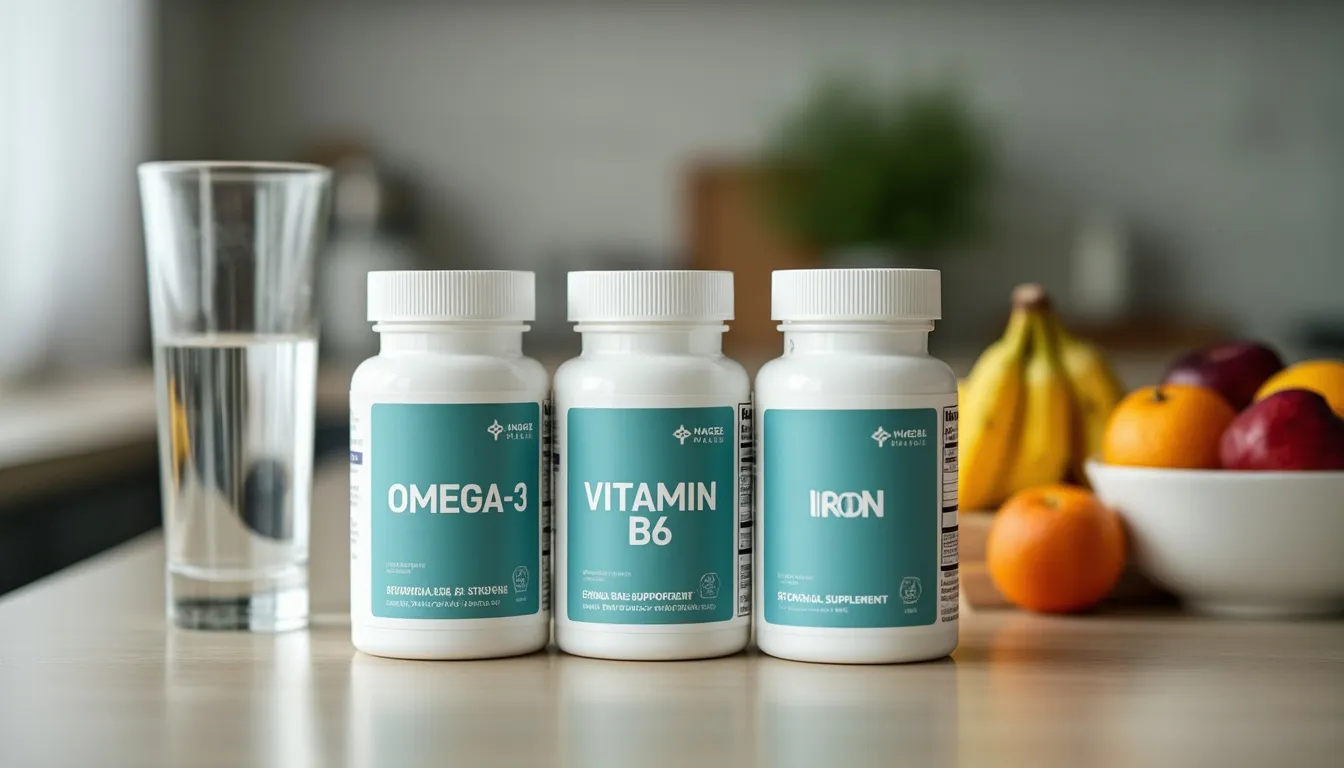The Ultimate Guide to Natural ADHD Management: Proven Tools for Parents, Teachers, and Adults

Natural ADHD management offers a supportive alternative to traditional methods, empowering parents, teachers, and adults to address ADHD symptoms through lifestyle adjustments. Attention Deficit Hyperactivity Disorder (ADHD) affects millions worldwide, impacting focus, emotional regulation, and daily functioning. This guide on natural ADHD management explores some of the most effective, research-backed strategies, providing tools that work harmoniously with the brain's chemistry to enhance focus, calm, and emotional stability. Explore Bonding Health's comprehensive ADHD tools for more support resources.
Optimizing Diet for ADHD: Food as Fuel for Focus
The connection between nutrition and ADHD symptoms is well-established. A nutrient-rich diet can positively influence brain chemistry, supporting improved focus, mood, and cognitive function. For more dietary insights, see our balanced diet guide for ADHD management.
Key Nutrients for ADHD
- Omega-3 Fatty Acids: Found in foods like salmon, walnuts, and flaxseed, omega-3s are linked to improved attention and reduced hyperactivity in those with ADHD. Discover the role of Omega-3s in ADHD.
-
Protein: Foods like eggs, lean meats, and beans are high in protein, which supports dopamine production—a neurotransmitter that helps regulate attention and mood.
-
Complex Carbohydrates: Unlike sugary snacks, complex carbs like whole grains, vegetables, and fruits release energy slowly, preventing blood sugar spikes that can worsen ADHD symptoms.
-
Iron and Zinc: Deficiencies in these minerals are associated with worsened ADHD symptoms. Foods like spinach, chickpeas, and pumpkin seeds are rich in iron and zinc, supporting better brain function.
Practical Tips:
-
Start with Breakfast: A protein-packed breakfast with complex carbs helps stabilize blood sugar and maintain energy throughout the day.
-
Reduce Processed Foods: Processed foods are often high in sugar and artificial additives that may exacerbate ADHD symptoms. Opt for whole foods whenever possible.
-
Hydrate: Dehydration can lead to irritability and difficulty focusing. Aim for at least 6-8 glasses of water daily to keep the brain hydrated and alert.
Exercise as ADHD Therapy: Moving for Mental Clarity

Exercise isn’t just for physical health—it’s also a powerful tool for managing ADHD. Regular physical activity boosts dopamine, norepinephrine, and serotonin levels, which all play a role in focus and mood regulation.
Recommended Activities:
-
Cardio Workouts: Running, biking, or jumping rope are excellent ways to release excess energy and improve mood.
-
Martial Arts and Dance: These activities combine movement with structure, teaching discipline and focus while keeping the mind engaged.
-
Yoga and Mindful Movement: Yoga, tai chi, and similar practices encourage mindfulness and emotional regulation, helping to calm the mind and improve focus.
Tips for Incorporating Exercise:
-
Make it Routine: Consistency is key. Try incorporating exercise into daily routines, such as walking to school or doing a morning yoga session.
-
Find What They Love: For children, especially, find an activity they genuinely enjoy. Whether it’s dancing, swimming, or playing tag, enjoyable activities make exercise feel like play.
Bonding Through Movement: Parents and teachers can use exercise as a bonding opportunity. Group activities, like family walks or outdoor school games, make physical activity a shared experience.
Mindfulness Techniques to Improve Focus and Emotional Regulation
Mindfulness, the practice of staying present and aware, has proven beneficial for managing ADHD. It helps reduce impulsivity, increase patience, and improve overall focus, making it especially useful for both children and adults with ADHD.
Techniques to Try:
-
Breathing Exercises: Simple breathing techniques, like deep belly breathing or box breathing (inhaling for four counts, holding for four, exhaling for four, and holding for four), can calm the mind in moments of stress.
-
Guided Meditation: Meditation apps and videos offer short, guided sessions tailored for focus and relaxation. These can be great for both children and adults who are new to mindfulness.
Progressive Muscle Relaxation: This involves tensing and relaxing different muscle groups to help bring awareness to the body and promote relaxation.
Implementing Mindfulness at Home and School:
-
Morning Mindfulness: Starting the day with a few minutes of quiet breathing or guided meditation can set a calm tone.
-
Midday Reset: For teachers, incorporating a quick breathing exercise or stretching break during the school day can help ADHD students release pent-up energy and refocus.
Family Practice: Practicing mindfulness as a family or class activity allows parents and teachers to model calm, focused behavior.
Supplements to Support ADHD Symptoms Naturally

While diet alone is essential, certain supplements can help support ADHD symptoms, especially if specific nutrients are lacking. Always consult with a healthcare professional before starting any new supplement regimen.
Recommended Supplements:
-
Omega-3 Fish Oil: Known for its positive impact on brain health and focus, fish oil supplements are widely used to manage ADHD symptoms.
-
Magnesium: This mineral supports relaxation and reduces restlessness, helping with sleep and calmness.
-
Vitamin B6 and Zinc: Both are known to support neurotransmitter function, potentially aiding in focus and impulse control.
-
Iron (If Deficient): Iron deficiency has been linked to worsened ADHD symptoms. An iron supplement might be recommended if blood work shows a deficiency.
Tips for Supplementing:
-
Choose High-Quality Brands: Not all supplements are created equal; choose trusted brands to ensure quality and safety.
-
Consistency is Key: Like diet, the benefits of supplements come from regular, consistent use.
Pair with Food: Some supplements, like omega-3s, are better absorbed with a meal. Make sure to follow any recommended guidelines for best results.
Bonding Health: Your Digital Ally for ADHD Support
Digital tools like the Bonding Health app provide holistic support for ADHD management. With features for mood tracking, symptom tracking, and community exercises, Bonding Health helps users manage ADHD more naturally and proactively. By tracking mood patterns and practicing emotional regulation exercises, users can better understand their emotional needs and manage stress.
Key Features:
-
Mood and Symptom Tracking: These features provide insight into emotional patterns and symptom triggers, allowing users to manage ADHD more proactively.
-
Quick Exercises for Emotional Regulation: Bonding Health offers simple, evidence-based exercises that can be done in just a few minutes, helping users reset and refocus.
-
Community Support: Bonding Health fosters a sense of community, where parents and teachers can share insights, tips, and encouragement, reinforcing a collective approach to ADHD management.
Integrating Bonding Health into Daily Life:
-
Morning Check-In: Start the day with a quick mood check-in to set intentions and prepare for the day ahead.
-
Track Progress: Over time, the app’s symptom tracking feature provides insights into what’s working, allowing parents and teachers to adjust strategies as needed.
Encourage Shared Use: When both parents and teachers use Bonding Health, they can better support each other’s efforts in helping children thrive, fostering consistency across home and school.

Conclusion: Embracing Holistic ADHD Management
Managing ADHD doesn’t have to rely solely on medication. Natural ADHD management approaches offer holistic solutions that support the unique needs of the ADHD brain. From diet modifications and regular exercise to mindfulness techniques and digital support through apps like Bonding Health’s parenting circles, these methods provide a well-rounded way to enhance focus, emotional regulation, and overall well-being.


